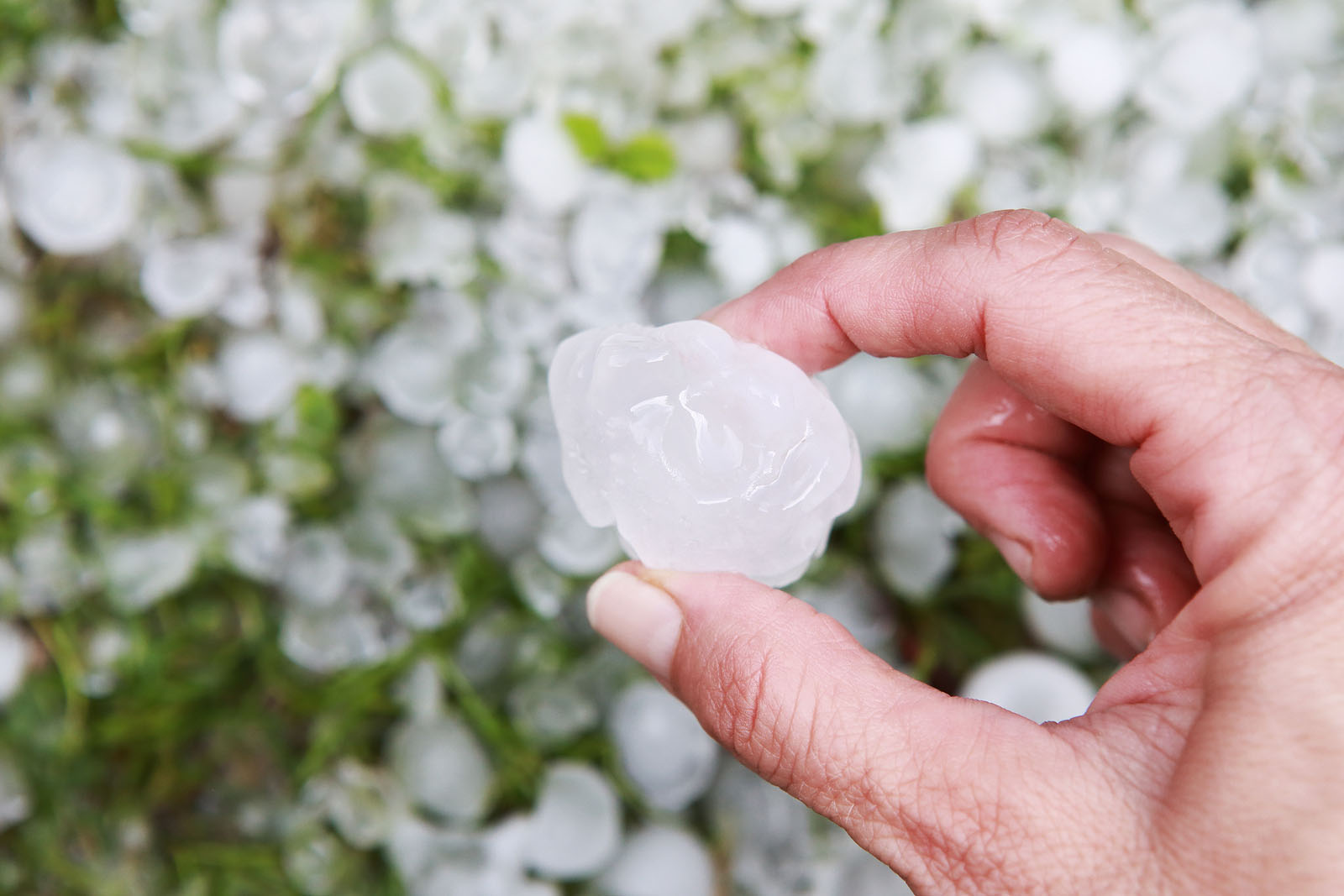Hailstones begin as frozen raindrops or pellets of snow in a thunderstorm cloud.
These “hail embryos” are carried by updrafts to a part of the storm where droplets of water exist in a supercooled state (that is, in liquid form at temperatures below freezing).
These supercooled droplets freeze into ice when they strike the surface of the hail embryo.
As the ice accumulates, the embryo grows into a hailstone. It continues to grow larger the longer it stays among the supercooled droplets.
As the hailstone gets heavier, it falls, but other air currents carry it back up.
Eventually the hailstone becomes too heavy to be supported, and it falls to the ground.
